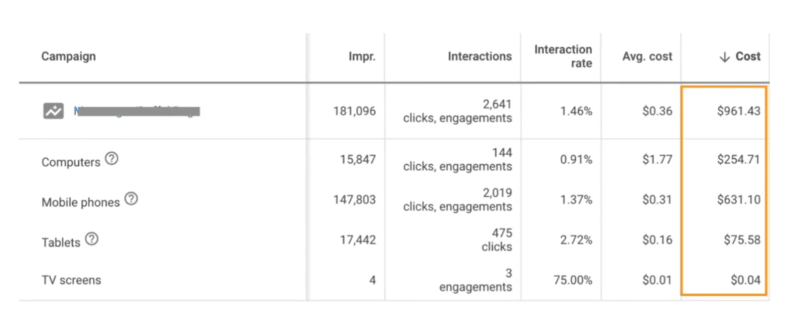Leveraging smart bidding allows advertisers to take advantage of real-time or auction bids. Generally, there is a wide range of information helping the algorithms operate efficiently, such as time of day, past search history, location, ad budget, and more.
Most advertisers are aware of the disadvantages of automated bidding, such as the loss of control and the ability to utilize bid adjustments. But in his MX Advanced 2022 presentation, Ani explains that the efficiency and performance gains are worth it.
Inputs and outputs
Ani explains that it’s up to us as advertisers to provide the algorithms with the data points it needs to make the right decisions in that real-time auction process. “Ultimately automated bidding will take the heavy lifting out of your campaign management and will typically outperform manual bidding. But like most things in life, you get what you give and machine learning can only make smart choices if it knows what’s valuable to your business. So it’s really important to set up campaigns and conversion actions that are in line with your business goals.”
Smart bidding strategies
There are four types of smart bidding available to use. Those are:
- Maximize clicks
- Maximize conversions
- Maximize conversion value
- Target impression share
It’s typically suggested that when launching new campaigns to use a manual CPC or maximize clicks strategy. This gives the algorithm the data it needs to understand who the customer is and who it should go after. Ani suggests keeping tight control of your keywords and how much you’re paying per click to drive that traffic. Then when you get a decent number of conversions using that strategy, switch to smart bidding.
The chart below from Optmyzr shows us what bid adjustments are available for your strategy and goals.

Best practices
If you’re a service-based business, you’ll likely want to use a Target CPA strategy with Maximize Conversions. Ecommerce businesses will want to use a Maximize Conversion Value strategy with a specific ROI goal. Ultimately, it’s about aligning your business goals so that the system can improve the efficiency of those campaigns. Here are some other best campaign practices:
- Shopping campaigns. Optimize your data feed
- Search campaigns. Monitor your search terms report
- Budget changes. Incremental changes of no more than 5-10% at a time, and no changes that are “too dramatic”
- Avoid setting very low daily budgets
- Be patient, give the campaigns 2-4 weeks to gain momentum
- Set realistic performance goals
Ani offers the advice “eyes on, hands-off.” Let the algorithm do the work and be patient!
Non-revenue generating campaigns
For campaigns that don’t have revenue ties to it, such as lead gen. or phone calls for a medical practice, the system will know how many calls or form fills are completed, but it can’t differentiate between the high-quality ones and the ones where people are looking for the wrong service. In these instances, you’ll need to ensure that the proper feedback loop is being utilized so the system can ensure you’re getting the right traffic. To prevent this, you’ll need to import offline conversions and sales data from your CRM.
Performance to the Max
Performance Max campaigns have taken over in popularity. The campaigns supersede any other campaign types, even search. The only exception to the rule is that f the search campaigns have exact match keywords. So if you’re running a display or shopping campaign in conjunction, the Performance Max campaigns will always take precedence.
Setting it up
Performance Max campaigns requires a different process than other Google ad campaigns you might have created. Performance Max combines dynamic search, shopping, smart shipping, and discovery all in one.
Set up includes asset groups (ad groups), audiences ad copy, including inputs for headlines, descriptions, images, and videos, and listing (product) groups. One important thing to note is that the Performance Max will create a dynamically generated video for you if you don’t create and upload your own. These videos usually aren’t pretty, so you’ll want to ensure that you upload one of your own choosing.
You’ll also want to make sure you have offline conversion tracking, uploaded customer lists, and built audiences around relevant keywords so Google has some direction on whom to target. If you have a product feed in the Merchant Center, Google will match your feed with the creative assets you provided in the asset group. Unfortunately, you won’t see the search terms that result in conversions or wasted ad spend, so you don’t have a lot of visibility in performance aside from revenue. The best course of action is to review in your feed which brands are spending money, and which aren’t converting. Then use that info to make changes on your offer. Keep in mind that you’ll only be able to see the data if you show “All Campaigns” and filter for Performance max.

Watch Menachem Ani’s full SMX Advanced presentation.
Get your free pass here.
The post Leveraging automated bidding strategies for maximum PPC performance appeared first on Search Engine Land.
from Search Engine Land https://ift.tt/1f9Dbh8
via IFTTT
No comments:
Post a Comment